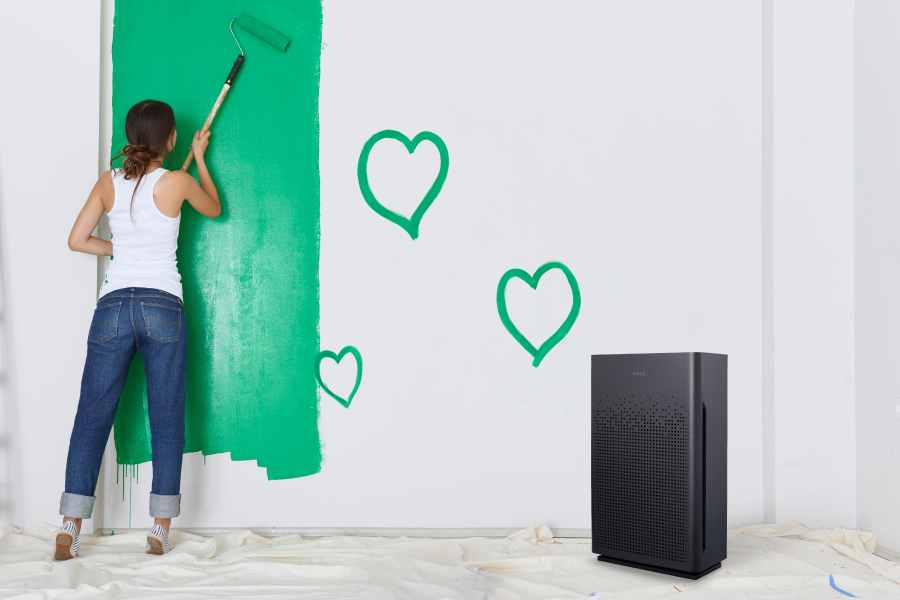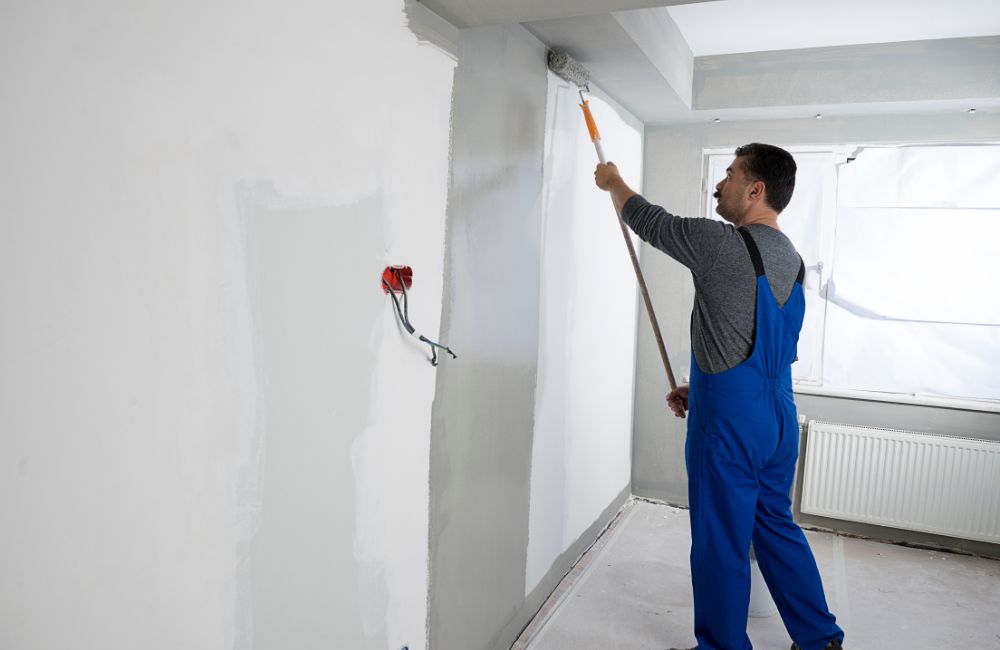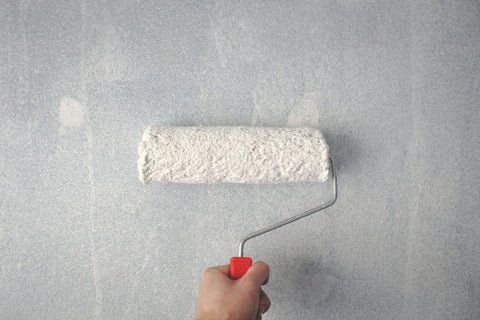Yes, air purifiers can help with indoor paint fumes. They can reduce harmful chemicals and improve air quality.
Indoor paint fumes can be a real concern. The strong smell and chemicals released can cause headaches, dizziness, and other health issues. Freshly painted rooms, especially in homes with poor ventilation, can trap these fumes inside. This is where air purifiers come in.
They work by filtering out harmful particles and chemicals from the air. Using an air purifier can make your home more comfortable and safer. In this blog, we will explore how air purifiers can specifically target and reduce indoor paint fumes, making your living space healthier. Stay tuned to learn more about their benefits and how they work.

Credit: www.winixamerica.com
Introduction To Indoor Paint Fumes
Painting a room can transform your living space. Fresh paint brings new life to your home. Yet, indoor paint fumes can be a hidden danger. These fumes come from chemicals in the paint. Breathing in these chemicals can be harmful.
Understanding the sources and health risks of paint fumes can help you take action. An air purifier might be a good solution. Let’s explore how they can help.
Sources Of Paint Fumes
Paint fumes come from various sources. Different types of paints release different chemicals. Here are some common sources:
- Solvents: Used to dissolve paint, solvents release strong fumes.
- Volatile Organic Compounds (VOCs): Found in many paints, VOCs can linger in the air.
- Drying Agents: Help paint dry faster but emit fumes as they work.
Knowing these sources helps in choosing low-fume or no-fume paints. This can reduce the risk of breathing harmful chemicals.
Health Risks Of Paint Fumes
Paint fumes pose several health risks. Short-term exposure can cause:
- Headaches
- Dizziness
- Nausea
Long-term exposure can be more serious. It might lead to respiratory issues or even damage to the liver and kidneys. Children and pregnant women are more vulnerable. It’s crucial to limit their exposure to paint fumes.
Using an air purifier can help. It can reduce the levels of harmful chemicals in your home. This makes the air safer to breathe.
How Air Purifiers Work
Understanding how air purifiers work is essential for anyone dealing with indoor paint fumes. These devices improve indoor air quality by removing harmful particles and gases from the air. Let’s dive into the details.
Types Of Air Purifiers
There are various types of air purifiers available on the market. Each type has unique features and benefits. Here are some common types:
- HEPA Filters: High-Efficiency Particulate Air filters capture 99.97% of particles as small as 0.3 microns.
- Activated Carbon Filters: These filters are effective at removing gases, odors, and chemical vapors.
- UV Light Purifiers: These use ultraviolet light to kill bacteria and viruses.
- Ionizers: These release ions that attach to particles, causing them to settle out of the air.
- Ozone Generators: These produce ozone to neutralize odors and pollutants but are less recommended due to potential health risks.
Mechanisms Of Action
Different air purifiers employ various mechanisms to clean the air:
| Type | Mechanism |
|---|---|
| HEPA Filters | Use dense fiber filters to trap particles. |
| Activated Carbon Filters | Adsorb gases and odors onto a porous surface. |
| UV Light Purifiers | Use UV-C light to destroy microorganisms. |
| Ionizers | Release charged ions that attach to particles, causing them to fall. |
| Ozone Generators | Produce ozone to neutralize pollutants (not recommended for regular use). |
Choosing the right air purifier depends on your specific needs. For paint fumes, a combination of HEPA and activated carbon filters is most effective. This setup captures particles and removes harmful gases.
Effectiveness Of Air Purifiers On Paint Fumes
Paint fumes can make indoor air quality worse. They contain harmful chemicals and strong odors. Many wonder if air purifiers can help. Let’s explore their effectiveness on paint fumes.
Filtering Paint Particles
Air purifiers are great at catching small particles. They use HEPA filters to trap airborne particles. These filters can capture paint particles. The air becomes cleaner to breathe.
| Filter Type | Effectiveness |
|---|---|
| HEPA Filter | High |
| Activated Carbon | Moderate |
Besides HEPA filters, some purifiers use activated carbon. This helps absorb paint odors. Together, they make the air fresher.
Removing Harmful Chemicals
Paint fumes have volatile organic compounds (VOCs). These are harmful chemicals that can cause health problems. Air purifiers with activated carbon can reduce VOC levels.
- Traps VOCs
- Reduces odors
- Improves air quality
Using an air purifier can make a big difference. It helps remove these harmful chemicals. The result is healthier air inside your home.

Credit: customcolonialpainting.com
Best Air Purifiers For Paint Fumes
Indoor paint fumes can be quite harmful. They release volatile organic compounds (VOCs) that can affect your health. Fortunately, air purifiers can help reduce these fumes. But not all air purifiers are equal. Some are better suited for handling paint fumes than others. Let’s explore the best types of air purifiers for this purpose.
Hepa Filters
HEPA filters are great for trapping particles. They can capture 99.97% of particles as small as 0.3 microns. This includes dust, pollen, and pet dander. But they can also help with paint fumes. They remove some of the larger particles in the fumes. This makes the air cleaner and safer to breathe.
Activated Carbon Filters
Activated carbon filters are essential for removing gases. They are made from carbon that has been treated to be very porous. This allows them to absorb VOCs from paint fumes. The pores trap and hold the chemicals, removing them from the air. This makes activated carbon filters very effective.
Using both HEPA and activated carbon filters together is ideal. The HEPA filter captures particles. The activated carbon filter absorbs gases. Together, they provide comprehensive air purification. They are the best option for dealing with indoor paint fumes.
Factors To Consider When Choosing An Air Purifier
When choosing an air purifier to tackle indoor paint fumes, several factors come into play. These factors determine how effective the purifier will be in maintaining a healthy indoor environment. Understanding these can help you make an informed decision.
Room Size
The size of the room is a crucial factor. Air purifiers are designed to work efficiently in specific room sizes. For smaller rooms, a compact purifier will suffice. But for larger spaces, you need a more powerful unit.
Check the Clean Air Delivery Rate (CADR). This rating indicates the volume of purified air an air purifier produces. The higher the CADR, the faster the purifier can clean the air in a large room.
Filter Replacement
Filter replacement is another important consideration. Air purifiers use different types of filters such as HEPA, activated carbon, and pre-filters. Each has a specific function and lifespan.
HEPA filters are effective at trapping small particles, including paint fumes. Activated carbon filters are great for removing odors and gases. Pre-filters capture larger particles like dust and hair.
Consider the cost and availability of replacement filters. Regular maintenance ensures the purifier works efficiently. Some models have filter change indicators, reminding you when it’s time to replace the filter.
Here’s a quick comparison of filter types:
| Filter Type | Function | Average Lifespan |
|---|---|---|
| HEPA Filter | Traps small particles | 6-12 months |
| Activated Carbon Filter | Removes odors and gases | 3-6 months |
| Pre-Filter | Captures large particles | 1-3 months |
By considering room size and filter replacement, you can choose an air purifier that effectively reduces indoor paint fumes. This ensures cleaner, healthier air in your living space.
Additional Tips For Reducing Paint Fumes
Looking to reduce paint fumes indoors? Besides using air purifiers, there are other effective ways to minimize these unpleasant odors. These methods can enhance your indoor air quality and make your painting experience more comfortable. Let’s explore some additional tips.
Ventilation Strategies
Proper ventilation is crucial for reducing paint fumes. Open windows and doors to allow fresh air to circulate. Use fans to help move the air around. Place one fan near an open window, blowing air out. This helps push fumes outside.
Another fan can be placed in the room to keep the air moving. This setup creates a cross-ventilation effect. It ensures that fumes don’t linger. If you have an exhaust fan, turn it on. It can pull out the fumes effectively.
Low-voc Paint Options
Choosing low-VOC paints is another excellent way to reduce fumes. VOC stands for Volatile Organic Compounds. These compounds release harmful gases into the air. Low-VOC paints have fewer of these chemicals.
They are safer for your health and the environment. Many brands now offer low-VOC options. These paints are available in various colors and finishes. They perform just as well as traditional paints. When shopping for paint, check the label for VOC information.
Using low-VOC paints can make a big difference. It helps keep your indoor air cleaner. It also reduces the risk of headaches and dizziness caused by fumes.
User Experiences And Testimonials
User experiences and testimonials are powerful tools to understand the real impact of air purifiers on indoor paint fumes. They provide firsthand accounts and personal stories, offering valuable insights into how effective these devices can be.
Success Stories
Many users have shared their success stories about using air purifiers to combat indoor paint fumes. One user mentioned that after painting their living room, they used an air purifier and noticed a significant reduction in fumes within a few hours. Another user reported that their headaches and dizziness, caused by paint fumes, disappeared after using an air purifier in their newly painted bedroom. These success stories highlight the effectiveness of air purifiers in creating a healthier indoor environment.
Common Challenges
Despite the positive testimonials, some users face common challenges. Some users found that not all air purifiers are equally effective. They noticed that cheaper models did not perform well in removing paint fumes. Additionally, some users mentioned that the size of the room and the type of paint used can affect the purifier’s efficiency. These challenges suggest that choosing the right air purifier is crucial for optimal results.

Credit: eoleaf.com
Frequently Asked Questions
How Do Air Purifiers Remove Paint Fumes?
Air purifiers remove paint fumes by trapping airborne particles and volatile organic compounds (VOCs). They use HEPA filters and activated carbon filters. This process helps reduce harmful chemicals in the air. The result is cleaner, fresher indoor air.
Are Air Purifiers Effective Against Paint Fumes?
Yes, air purifiers are effective against paint fumes. They capture VOCs and other pollutants. Using a purifier with activated carbon filters is best. It can significantly improve indoor air quality.
What Type Of Air Purifier Is Best For Paint Fumes?
HEPA air purifiers with activated carbon filters are best for paint fumes. They efficiently capture VOCs and other particles. Look for purifiers with high CADR ratings. This ensures better performance and cleaner air.
How Long Should An Air Purifier Run For Paint Fumes?
Run an air purifier for several hours after painting. This helps to remove lingering fumes. Continuous use is ideal in freshly painted areas. It ensures optimal air quality and safety.
Conclusion
Air purifiers can help reduce indoor paint fumes. They filter harmful particles. This makes the air safer to breathe. Choosing the right purifier is key. Look for HEPA filters. These are effective for removing toxins. Keep windows open for better ventilation.
Combine both methods for best results. Cleaner air means a healthier home. Invest in good air quality for your family’s well-being. Stay safe and breathe easy.
Rakib Sarwar is a Registered Pharmacist and a reputed health and wellness blogger. He has a great interest in Air purifiers.
